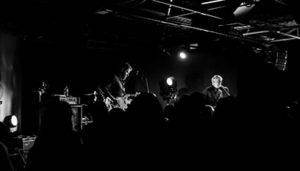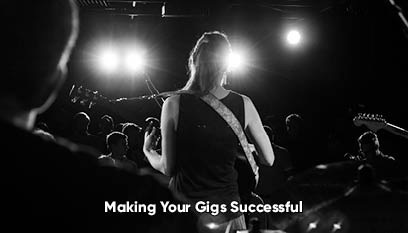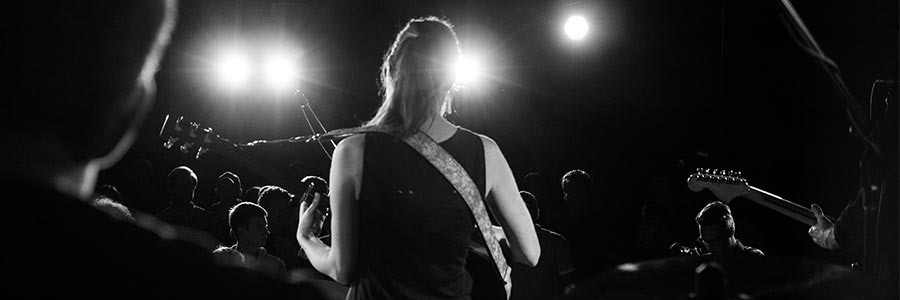 Congrats on getting the gig! Now it’s time to throw all you can at promoting it and making it run smoothly. (Not there yet? Check out How to Get Your First Gigs for more info.)
Congrats on getting the gig! Now it’s time to throw all you can at promoting it and making it run smoothly. (Not there yet? Check out How to Get Your First Gigs for more info.)
Marketing & Promotion
Marketing and promotion are ever-evolving topics and best practices change frequently, so rather than try and give you a specific marketing prescription, I strongly recommend that you take a step back and think about your audience.
Where do your fans — and prospective fans — spend their time, both in person and online? If it’s possible for your content to be there, get it there. If it’s not possible, or if the cost is just not worth it (as with most paid advertisements), focus on what you can reasonably do.
Two old-school methods are still worth doing: putting up gig posters and reaching out to the media.
Posters
You don’t need to spend a lot of money on posters, but you should have good-looking posters for the venue, local music shops, and other arts hangouts. As recently as five years ago I was a big proponent of the 11 x 17 poster, but these days a well-designed letter size poster is all you need.
Focus your design on a compelling image. It could be a photo of the band. It could be a cool graphic. That’s largely up to you, your desired audience, and the vibe of your band.
At the bare minimum you should include your band name, the basic info of the show (date, time, location, and cover/ ticket price), and your website so people can find more information if they need it. Anything beyond that can actually detract from the impact of your poster.
Your poster should also match (stylistically at least) the online promotion you do for your show. There is ZERO reason for you to do two different designs for the same show at this point in your career.
A word of caution about postering: Most municipalities frown on taping posters to telephone poles, so don’t do it unless you see that that is the norm in your scene. You don’t want to attract negative attention.
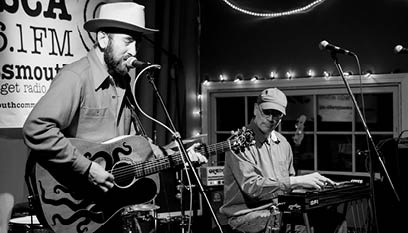
Dan Blakeslee
In my neck of the woods there lives a local treasure named Dan Blakeslee. He is both a gifted illustrator and a singer/songwriter. His unique style gives his posers instant brand recognition. If you’ve ever had the pleasure of consuming the Alchemist’s Heady Topper or Focal Banger (both delicious IPAs brewed in Vermont), you’ve seen his artwork on the cans.
His signature style, plus his Energizer Bunny level dedication to putting up his posters, makes him one of the best-promoted musicians in the region. Everyone knows when Dan is playing and they come out. So be like Dan!
Media Outreach
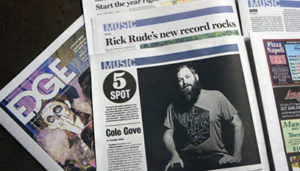 You don’t need to be overly aggressive with media outreach, but do the bare minimum. Submit your gigs to the local art paper’s events calendar and make sure your local music writers and radio DJs are aware of the show. They only have so much talk time and column inches, but you never know when they might need a topic at short notice.
You don’t need to be overly aggressive with media outreach, but do the bare minimum. Submit your gigs to the local art paper’s events calendar and make sure your local music writers and radio DJs are aware of the show. They only have so much talk time and column inches, but you never know when they might need a topic at short notice.
Advancing The Show
You need to know (and make sure the rest of the band knows) at least the following details:
- What time you can load in
- What time everyone is expected to show up
- What time sound check is
- What gear you need to bring
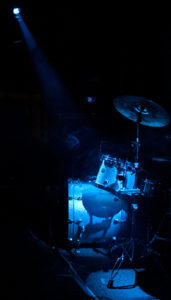 It’s time to dust those riders, stage plots, and input lists off and have them ready if they’re going to be useful.
It’s time to dust those riders, stage plots, and input lists off and have them ready if they’re going to be useful.
As a reminder (these were mentioned in How to Get Your First Gigs):
A rider is a list of technical or hospitality requirements that a band requests for a gig. If you’re just getting started, it’s VERY unlikely that you’ve ever been asked for a rider. (And if you send one, you will likely be laughed at.)
There’s a very good chance that you’ll be asked for an input list, which is a list of all of the input channels and microphones you need to properly put on your live show.
A stage plot is a graphical representation of the way your band sets up on stage. It can’t hurt to have one of these prepared in advance, but if you’re opening you’ll probably be expected to accommodate the stage plots of the more established bands (especially if gear-sharing or backline is part of the arrangement).
Some new terms:
A guest list is a list of people who get in without having to pay for a ticket. It’s tempting to put your significant other, your parents, your best friend, or anyone else who has supported you on the list for your first big gig. But if the venue doesn’t ask you for a list, just go to the door and ask to pay for these special people ahead of time. That way you’re not being presumptuous and showing respect for the business. Who knows, the person at the door may just say they’re cool, and then you don’t have to shell out any cash. You should still try to save a spot on the guest list for anyone working for you, like a photographer or a person selling your merch, but it’s best to approach the matter as a request rather than a demand when you’re starting out.
 Local liquor laws are important to be aware of. For example, my home state of New Hampshire prohibits musicians from drinking on stage, taking the view that they are employees and they are working. If it’s legal to drink on stage in your area (or if you consume on the sly), be sure to stay professional. It wasn’t cool when Steven Tyler and Keith Moon couldn’t make it through their shows in the 70s and it’s not cool now.
Local liquor laws are important to be aware of. For example, my home state of New Hampshire prohibits musicians from drinking on stage, taking the view that they are employees and they are working. If it’s legal to drink on stage in your area (or if you consume on the sly), be sure to stay professional. It wasn’t cool when Steven Tyler and Keith Moon couldn’t make it through their shows in the 70s and it’s not cool now.
Some venues offer benefits to the band, such as reduced prices on drinks (when not on stage) or free meals. Unfortunately those are few and far between these days. The best way to find out is to inquire when you’re advancing the show. If the answer is yes, great! If the answer is no, don’t make a big deal out of it. You can play it off as a question you figured the other band members would ask, so you’re just covering your bases.
If you have merch to sell, like T-shirts and keychains, it’s important to know how that’s going to work. Some bands are cool with selling each other’s merch, but others view this practice with suspicion. Whenever possible, try to have your own people cover the merch table. Having your own folding table with some kind of covering (like a tapestry) gives your merch table instant cred. Accepting electronic payment is easier than ever these days with the rise of devices like the Square, but if possible still have some cash on hand to make change.
If someone offers you cash and the change situation is rough, cut them a break — you are saving the fees you’d have to pay on their electronic payment.
Sound Check
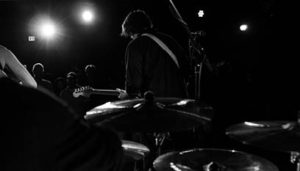 Depending on the place you’re playing, sound check can be as elaborate as running several songs and creating individual monitor mixes or as simple as a line check before “1, 2, 3, let’s go!” Either way, you should take the time you have to develop a rapport with the sound engineer.
Depending on the place you’re playing, sound check can be as elaborate as running several songs and creating individual monitor mixes or as simple as a line check before “1, 2, 3, let’s go!” Either way, you should take the time you have to develop a rapport with the sound engineer.
Sound engineers are in an uncomfortable position, because they provide a service to the venue and the band. No one wants their work called out publicly, so touch base with the engineer before the set and find out how to communicate discreetly as needed during the show.
If you know you have an issue with stage volume, make life easy on the sound engineer and your audience by bringing an amp stand and practicing playing a little more quietly.
Gear Sharing
When multiple bands are playing the same night, sharing equipment can save a lot of time. Touch base with the other band(s) on the bill in advance about who’s bringing what, as well as the equipment owner’s rules for the gear.
It’s very common to share a drum kit throughout the evening, since that’s the most time-consuming gear to set up and sound check. Typically the drums’ owner will ask that the other drummers provide their own kick drum pedal and cymbals, as they’re some of the most specific and expensive parts of the kit.
It’s also common to share the bass rig, but not guitar amps. Honestly I think this is an area where guitarists should take a lesson from our bass-playing brothers and sisters. Bassists have individualized tones just like guitarists do. Being able to use other people’s gear is one of the reasons I’m a big advocate for not relying on plug-and-play multi-effects units. You can read about this in the post about beginners and guitar pedals.
If you’re using someone else’s amp, make sure you return it with the same settings. You can write their settings on a strip of console tape (or gaff tape – just make sure it’s not duct tape) and put it on the amp so you won’t forget what they were.
Develop a Set List
The set list is your roadmap to a successful gig. It reminds you of the next turn before you get caught up in the moment and miss it. The sound engineer will also appreciate having the set list in advance, especially if you will have different singers or instrumentation for different songs.
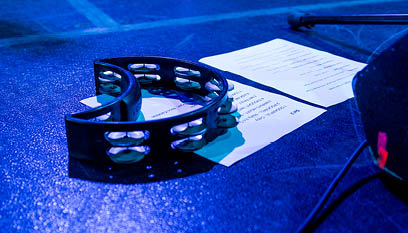
A well-thought-out set list is important. Unless you’re doing something intentional like playing a specific album front to back, you’re free to choose your own adventure — just not as you go. Standing on stage unsure of what song should be next makes you look like amateurs, and the audience doesn’t need to be let in on that secret.
The first thing you play is your first impression. If you’re able to, just count off and go. No banter. No fooling around. Just play. Song two is your chance to prove you’re worth sticking around for. Take it up a level. Right after the third song is a great chance to say your first hellos to the audience.
Planning out your dialogue points are just as important as planning out your songs. Audiences usually don’t want to be talked to ad nauseum, so pick the best moments and have your best talker (not necessarily a singer) step up and address the crowd. Regardless of how long your set is, your last tune is your last chance to make an impression, so leave it all out on the stage and be sure to say thank you before the applause ends.
Don’t forget to thank the other bands from the stage, whether they played before you or are going to play after you. It’s also smart to share where you’re playing next, when your new album is coming out, or any other relevant updates to make it easy for all your new fans to follow the band and see you play again.
Consider Hiring a Photographer for the Show
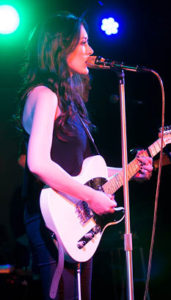 Here at Sweet Guitar Tones, I’ve talked a lot about the importance of hiring a photographer for your band. Don’t forget live shots! If you’ve hired a photographer you can instruct them how you’d like the show shot. This is a great chance to have the band photographed from the most flattering angles.
Here at Sweet Guitar Tones, I’ve talked a lot about the importance of hiring a photographer for your band. Don’t forget live shots! If you’ve hired a photographer you can instruct them how you’d like the show shot. This is a great chance to have the band photographed from the most flattering angles.
I don’t mean making the band seem more physically attractive, although I guess that never hurts. The point of the photos is to document the gig in a way that will make people want to see you play in the future. If the whole room is empty, have the photographer just shoot the stage, or take some shots from behind that fade into a shallow depth of field effect.
Have a Professional, Gracious Attitude… No Matter What
Sometimes things go wrong. The mix can be off or the crowd can be light. Don’t make an issue out of either. Here’s a quick anecdote about what not to do.
One of the frontmen for the first band I managed invited me to check out his next project. It was a pretty dead night, and for whatever reason he chose to do some ad-libs. They were doing their cover of the Flobots’ “Handlebars” and he chose to change “I can ride my bike with no handlebars,” to “I can rock the mic with no people here, no people here, no people here.” There was no reason to highlight that the room was empty. The bartenders who weren’t making money knew. The other musicians on stage knew. And the few of us there felt unappreciated. Not cool.
Working in student activities at a university, I’ve seen my share of home-run events and I’ve seen some solid flops. By far one of my biggest flops was when we brought in two college-market country bands for part of our welcome-month programming. Let’s put it this way: 47 people in a room meant for 300 had the time of their lives. Yeah, that bad.
But I’ll never forget how the bands handled it. They rocked that room as if it were sold out. They were true professionals, and I made sure their agents knew it.
From time to time, you’ll have a rough gig — one of those nights where it’s just the bands and their significant others. If you’re not the last band and none of your gear is on the stage, it’s always tempting to peace out, but if at all possible you should stay and at least offer to help pack up. If you all can’t stay, make sure at least some of your band’s delegation stays behind to comment on the set and make apologies for the others who had to leave early.
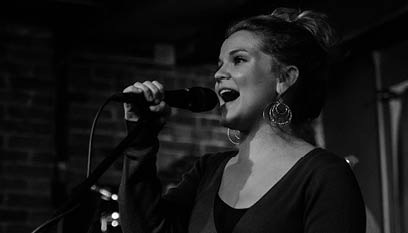
After The Gig
Always follow up. A great singer-songwriter named Tristan Omand has been kind enough to come to the university where I work to talk to my students about being a musician. Each time he has come involves about 90 minutes in the car, plus about two hours talking with students. This is not a glamorous gig at all, and it’s totally unpaid.
But without fail I’ve had a thank-you email waiting for me in the office the next day. So when I actually had a paid gig to offer someone, who do you think I called?
When you follow up, it shows that you take what you’re doing seriously. It also naturally starts the conversation about setting up future gigs. That might not happen in the first thank-you email, but the next time you reach out it’s more than just a cold call. You’re a known commodity.
Building Your Reputation
 Hopefully the gig went well. But even if it didn’t, if you hired a photographer you’ve got some killer images to make it look like everything went well. Is that ethical? As long as you’re not Photoshopping extra people into the crowd, I’m going to say yes.
Hopefully the gig went well. But even if it didn’t, if you hired a photographer you’ve got some killer images to make it look like everything went well. Is that ethical? As long as you’re not Photoshopping extra people into the crowd, I’m going to say yes.
So what do you do with these images? First of all, you incorporate them into your one-sheet and other marketing materials to try and get more gigs.
The other thing that you can do is take advantage of your social networks to make a splash with the images. You don’t want to make it seem like you’re EVERYWHERE, which is how sponsored posts look. If you’re on a shareable social network, like Facebook, and you have the time and some willing folks to help you make a splash you’ve got an advantage.
Let’s say that the gig was on a Friday and you get the images back on a Sunday. Take the very best images and build an album on your band’s profile. From there you want individuals to share — rather than repost — the album. The way the Facebook algorithm currently works is that, unless you’ve paid, only a small percentage of your followers see your post. But due to the nature of the digital beast, more people see things that are shared by individuals. This allows you, and your compatriots, to create the ultimate Venn diagram of support.
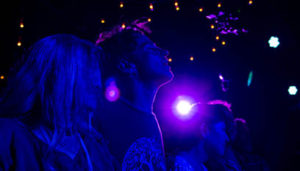 Ahead of this gig, it’s a good idea for you and your bandmates to recruit friends and family from a wide array of your groups of friends to agree to share your content. But be careful! You want this to be organic. You don’t want a bunch of people to share your posts at the same time. When that happens, the casual viewer sees “7 people shared this post.” That makes it seem like a bunch of folks are paying attention, but the credibility of the sharers will be lost. You want each share to mean something. So here’s what you do:
Ahead of this gig, it’s a good idea for you and your bandmates to recruit friends and family from a wide array of your groups of friends to agree to share your content. But be careful! You want this to be organic. You don’t want a bunch of people to share your posts at the same time. When that happens, the casual viewer sees “7 people shared this post.” That makes it seem like a bunch of folks are paying attention, but the credibility of the sharers will be lost. You want each share to mean something. So here’s what you do:
- Select folks who won’t mind sharing your content when they’re told to.
- Assign them a day and approximate time. (Be flexible about this. They’re doing you a favor, and they’re not your own personal Hootsuite!)
- Remind them to share the post and not create their own post from scratch. You want everything to trace back to you.
- Finally, you know that relative that shares EVERYTHING you post (Hi, Aunt Shirley!). They don’t need to be in on this (sorry). They’re going to share anyway. For a campaign like this, you want the folks who are not already likely to share your materials.
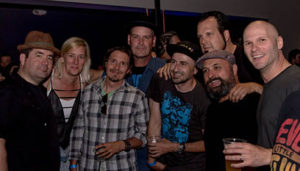 If you’re able to pull this off for a few days, one gig’s worth of content can last for a week, maybe more. More importantly you’re getting your image and name in front of a bunch of different folks. Hopefully some movers and shakers in your scene will pick up on this and remember your name. Be sure to thank everyone for their engagement and encourage them to check out your next gig.
If you’re able to pull this off for a few days, one gig’s worth of content can last for a week, maybe more. More importantly you’re getting your image and name in front of a bunch of different folks. Hopefully some movers and shakers in your scene will pick up on this and remember your name. Be sure to thank everyone for their engagement and encourage them to check out your next gig.
Never forget that it’s called SOCIAL media for a reason. Reach out. Connect. Invite them to the next gig. If you can get them invested in what you’re doing, they’ll support the next gig, and that will make each additional gig more successful.
A Parting Word of Warning
I’ve been around bands for a long time — all the way back to the 80s, when my dad was in bands. There are two sure signs that a band is in trouble:
- No updates to websites (a telltale sign of problems since 2002) and social media (since 2004)
- Your lovers and loved ones stop coming to gigs (a telltale sign since before recorded history).
If your nearest and dearest stop coming out, it means that you’re not offering anything new. Don’t get complacent. Give people a reason to show up.
